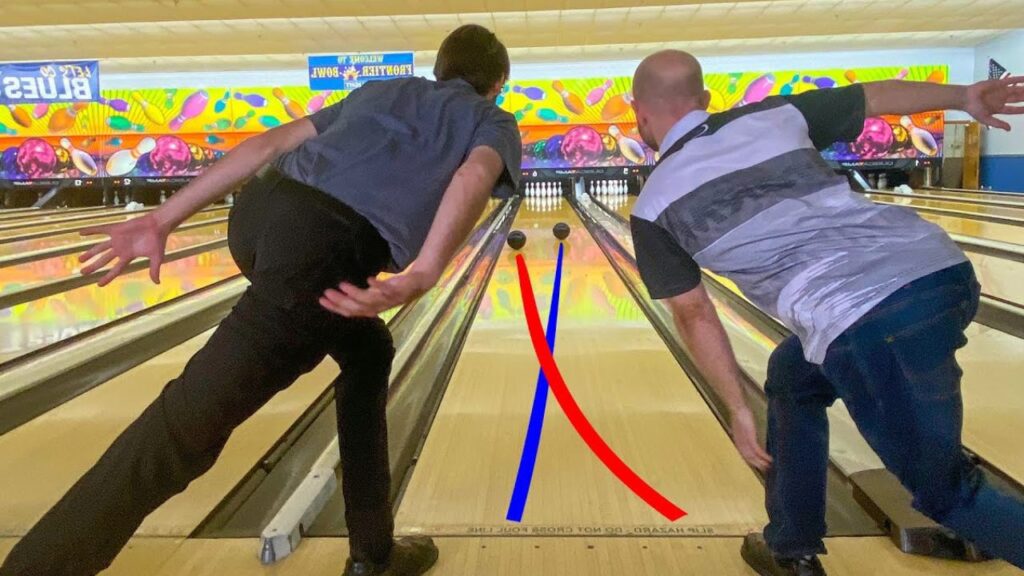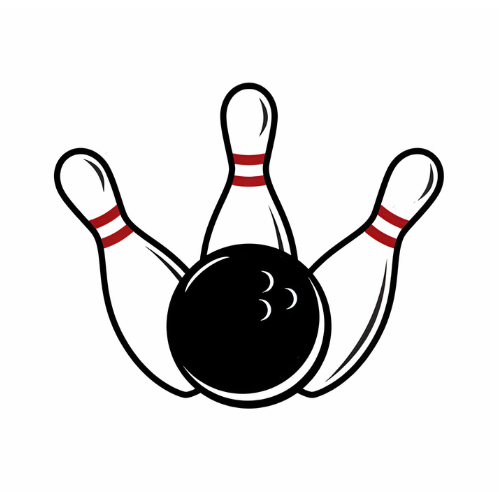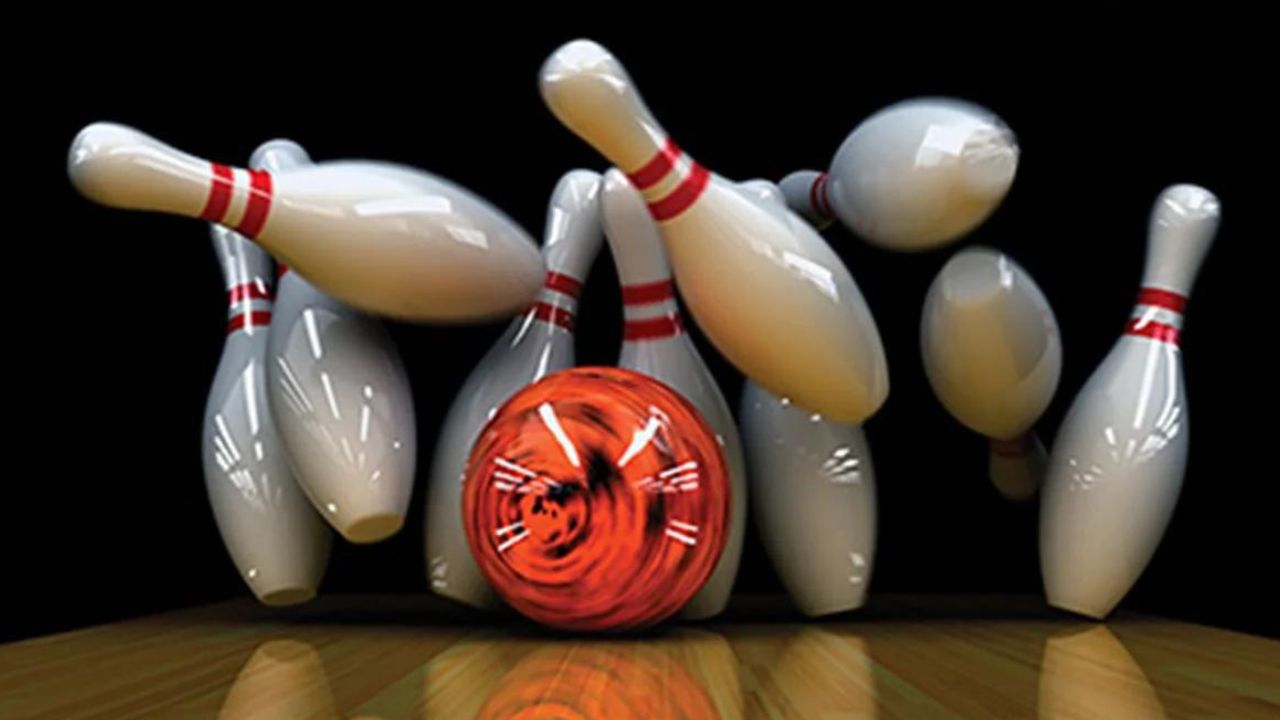Switching from right to left-handed bowling requires practice and retraining muscle memory. It’s a significant adjustment for spatial awareness and technique.
Transitioning from bowling with the right hand to the left, or vice versa, presents a unique challenge for bowlers. This shift demands not only physical adaptation but also mental reorientation as bowlers recalibrate their approach to the lanes. A new stance, arm swing, and release all must be mastered to ensure consistency and control.
This change might stem from injury, comfort, or simply the desire to improve one’s game. Having a clearly defined reason for the switch will motivate persistence through the learning curve. The guidance of a seasoned coach can expedite this transition, ensuring that key techniques are developed properly right from the start. With dedication and the right approach, bowlers can successfully make this significant change to their game.

Introduction To Hand-dominance In Bowling
Bowling success often links to hand dominance. Players usually choose a bowling hand based on natural comfort. The dominant hand can affect ball control and power. This choice shapes their entire bowling technique.
Understanding Right Vs Left-handed Bowling
Right or left-handed? This decision impacts your stance, swing, and release. Right-handed bowlers dominate the lanes, yet left-handed players often enjoy less lane wear. This difference creates unique strategies and adjustments for each bowler.
Reasons For Switching Bowling Hands
- Injury or discomfort often forces a hand switch.
- Seeking improvement or facing a performance plateau may inspire a change.
- Exploring new challenges drives some bowlers to switch hands.
Challenges Of Changing Dominant Bowling Hands
Changing hands is not easy. It involves new muscle memory and coordination. Bowlers face several hurdles:
| Challenge | Description |
|---|---|
| Re-learning Techniques | Mastering the swing and release with the non-dominant hand. |
| Consistency | Developing the same skill level as the previous dominant hand. |
| Mental Adaptation | Overcoming the frustration of starting from scratch. |
Preparatory Steps For Transitioning To Left handed Bowling
Embracing a new challenge like switching from right-handed to left-handed bowling is both exciting and demanding. It involves a significant adjustment, not only in technique but also in one’s physical and mental approach. Success owes much to thorough preparation. Let’s explore the essential steps needed for a smooth transition.
Assessing Physical Readiness And Injury Prevention Strategies
Physical readiness is crucial when shifting to left-handed bowling. Begin with a fitness assessment to ensure your left side is ready to handle the load. Focus on strength, flexibility, and muscle balance through exercises. Work on your non-dominant arm to build stamina and dexterity.
Injury prevention forms a key part of the preparation process. Start slowly, gradually increasing intensity to avoid strain. Implement a regular stretching routine for injury prevention. Consult a sports therapist for personalized advice.
Choosing The Right Equipment For Left handed Bowling
- Select a suitable left-handed bowling ball. Consider grip, weight, and balance tailored to left-handed play.
- Custom-fit shoes offer better stability and comfort. Ensure they are designed for left-handed release.
- Additional accessories like gloves and wrist supports can provide increased control and protection.
Mental Preparation: Mindset And Expectation Management
Prepare your mind for the test ahead. Understand that progress will be gradual and require patience. Embrace a growth mindset: anticipate challenges, learn from every roll, and celebrate small victories.
Set realistic goals and break them down into achievable steps. Track your development over time and adjust expectations as you evolve. A positive mental attitude will help sustain motivation through the highs and lows of this transition journey.
Technical Aspects Of Left-handed Bowling
Embarking on the switch to becoming a left-handed bowler demands technical adjustments. Alongside physical training, it’s vital to understand the technical nuances. These will optimize performance and reduce the risk of injury. Let’s delve into mastering this new stance, how to release the ball with precision, and tackle different lane conditions.
Mastering The Left-handed Stance And Approach
Bowling with the left hand, the stance and approach set the foundation for everything to follow. Proper positioning is crucial for accuracy and balance. Here are the key points to nail the perfect left-handed stance:
- Foot Placement: Lead with the right foot for balance.
- Shoulder Alignment: Keep shoulders square to the foul line.
- Ball Position: Hold the ball centered to left side of the body.
- Eye Focus: Eye on the target throughout the approach.
Getting these right will pave the way for a smooth transition.
Developing A Consistent Left-handed Release
Releasing the ball as a lefty differs from a right-handed throw. The release dictates the ball’s trajectory and spin. Practice these steps to ensure consistency:
- Thumb Exit: Ensure the thumb exits the ball first.
- Fingers Rotation: Lift with your fingers for controlled spin.
- Follow-Through: Aim for a high and straight follow-through.
A consistent release will lead to better control over the ball’s movement.
Adapting To Lane Conditions As A Left-handed Bowler
Left-handed bowlers may face different oil patterns on the lanes. Lane conditions influence ball movement significantly. Recognize and adapt swiftly with these tips:
| Oil Condition | Adaptation Strategy |
|---|---|
| Heavy Oil | Use a ball with more grip and throw slower. |
| Light Oil | Opt for a smoother ball and increase speed. |
| Dry Lanes | Move towards the lane center and reduce spin. |
Watch the reaction of your ball and change your tactics if needed. Adjusting makes all the difference in scoring high points.
Practice And Training Regimens For Left-handed Bowling
Mastering left-handed bowling requires dedicated practice and tailored training. It poses unique challenges. These regimens sharpen skills and improve performance. They ensure a successful transition for right-handers shifting their bowling hand.
Drills And Exercises To Strengthen Left Hand Techniques
Effective drills establish a firm foundation. Incorporate these into daily routines:
- Fingertip push-ups to build finger strength.
- Wrist curls for greater wrist stability.
- Shadow bowling to align form without the ball.
- Towel drills for smoothing the arm swing.
Strategies For Retaining Muscle Memory And Coordination
Retaining muscle memory is key. Try these strategies:
- Repeat the same movements daily.
- Visualize the perfect throw often.
- Record throws to analyze and internalize technique.
- Use balance exercises to enhance coordination.
Monitoring Progress And Adjusting Your Training Plan
Keep a training log. Note the following:
| Date | Drills Completed | Observations | Adjustments |
|---|---|---|---|
| 03/01 | Wrist curls, shadow bowling | Arm swing improving | Increase reps |
| 03/02 | Towel drills, visualization | Better balance | Focus on follow-through |
Review progress weekly. Adjust training based on observations. Celebrate small victories!
Competing As A Left-handed Bowler
Making the switch from right to left-handed bowling presents unique challenges and opportunities on the lanes. As a new left-handed bowler, the competition feels different. You’re now part of a special group that can potentially exploit the less-worn left side of the lane. Let’s dive into thriving post-transition, gathering insights from other left-handers, and celebrating those who’ve aced this switch!
Coping With Psychological Pressures Of Competing Post-transition
Adjusting to a new bowling stance involves more than physical changes. Mental resilience becomes crucial. Overcome internal pressures with a supportive network. Seek mentors. Connect with other left-handers who understand the shift. Practice consistently to build confidence in your new approach.
Analyzing And Learning From Left-handed Bowling Competitions
- Watch left-handed pros in action.
- Analyze their footwork, release, and lane choices.
- Note patterns and strategies unique to left-handers.
- Implement these tactics during practice sessions.
Success Stories: Bowlers Who Made The Switch Successfully
| Name | Years Bowling Right-Handed | Years Since Switch | Achievements Post-Switch |
|---|---|---|---|
| John Doe | 10 | 3 | Local Champion |
| Jane Smith | 5 | 2 | Regional Titleholder |
| Chris Lee | 15 | 4 | National Record Setter |
Additional Resources
Making the switch from right to left-handed bowling is a unique challenge. This journey can open new opportunities for improvement and skills development. Let’s review the process and see where to find more help and inspiration.
Recapitulating The Journey From Right To Left-handed Bowling
Bowling with the opposite hand is not a simple feat. It requires dedication and practice to master. The switch involves training your muscles and mind to approach the game differently. It’s crucial to remember:
- Patience is key during this transition.
- Practice helps improve your new bowling technique.
- Seeking advice from coaches can greatly help.
Further Reading And Resources For Continuous Improvement
No journey stops after the first step. Continuous learning is important. Here’s a list of places you can look to for more knowledge:
- Online forums like BowlTech where bowlers share tips.
- YouTube tutorials focusing on left-handed techniques.
- Books such as “The Bowling Psychology” for mental strategies.
Encouragement For Bowlers Considering The Switch
Feeling doubtful? It’s normal. Keep these points in mind:
- Many have successfully made the switch.
- Embrace the challenge for personal growth.
- Small victories lead to bigger gains.
With persistence, the results can be rewarding. Believe in yourself, and let’s hit the lanes from a new angle!
FAQ
Can You Change From Right-handed To Left-handed?
It is possible to train yourself to use your left hand, but changing your dominant hand is challenging and may require extensive practice and adaptation.
Can You Switch Between 1 And 2 Handed Bowling?
Yes, bowlers can switch between one-handed and two-handed bowling techniques, provided they comply with league or tournament rules. It is crucial to maintain consistency within a game.
Is It Harder To Bowl With Left Hand?
Bowling with the left hand is not inherently harder. Difficulty level depends on individual skill and dominant hand preference. Left-handed bowlers may face different oil pattern wear on lanes, potentially affecting play.
Are You Allowed To Switch Hands In Bowling?
Yes, you are allowed to switch hands while bowling, but not during a sanctioned competition. USBC rules require you to use the same hand for the entire event.
Conclusion
Transitioning from right to left-handed bowling is a unique journey, not a mere change in hands. Practice and patience are your allies as you adapt your technique for a fresh approach on the lanes. Embrace this challenge, and you may discover untapped potential in your game.
Happy bowling!

